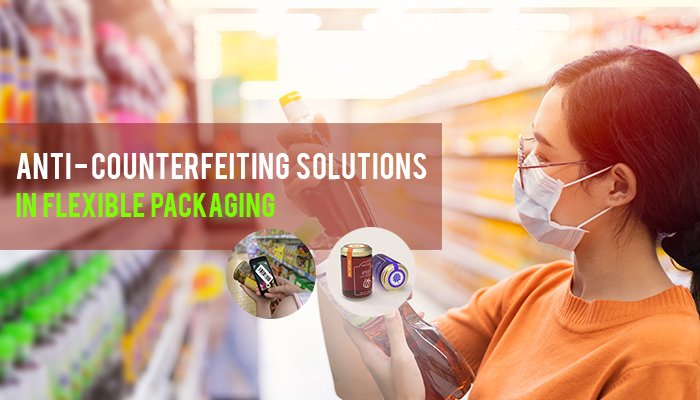Anti-Counterfeiting Solutions in Flexible Packaging

The digital era of e-commerce has provided us with numerous conveniences, from ordering daily supplies to the uncommon, rare “Havana Samagri” in the blink of an eye. Everything is just a click away now. During the pandemic, this trend was not just a fad but an actual need. That time has prompted us to take this up in our lives, more than we wanted to. These developments come with the inevitable threat of counterfeiting.
After spending almost 15years in this Industry, I think Packaging has immense capability to change the perception and market itself. As a Packaging Guide, I wish to look deep into every point that can benefit customer or brand. Resolving challenges is one of its step.
Counterfeiting is not a new problem, it has been troubling brands for quite some time. And with e-commerce, their approach is getting noticed very frequently. Ecommerce has given us the opportunity to buy a product without seeing it first-hand. This allows for an easy swoop in for all duplicate products. For brands, it is an actual challenge to maintain authenticity without losing customers. We are all aware that counterfeit goods of poor quality can not only harm the brand’s value but can also harm customers’ health.
Considering all this turmoil, brands are now more vigilant about creating anti-counterfeiting measures in their product packaging. Let us look at the anti-counterfeiting measures taken in packaging.
Security seals
Security seals are tamper-evident mechanisms that are commonly seen on the neck of bottled products, packaged small boxes, and large cartons. They are a relatively inexpensive way to detect counterfeiting.
These security seals are known to leave behind marks, colors, or prints upon tempering. These give cues to the brands and the counterfeit entity about the product’s inability to be a counterfeit.
Barcodes
Barcodes are another much safer and easier way of providing security from counterfeit goods. Barcodes help you track the products back to their origin, giving you details on the channels used in the process. There are various types of barcodes in use.
Barcodes that give information about product packaging originality. Some of them provide a brief overview of the lot’s details, the date of packaging, and so on. You can have the same barcode on all products, or you can also have a unique barcode on every product. Depending on your need and trend, you may decide to educate your customers.
Security Inks & Printing
These are special inks that clarify the difference between counterfeit and original products. We use neon print in a few products’ packaging, which shines only in neon light. On a similar note, we have inks that shine under UV light. Few products make use of laser-induced inks, which change colour when exposed to laser light.
With printing technologies, we have numerous effects that are not used by counterfeiters, such as sand touch, soft touch, wet touch, silver and gold foiling, etc. We also provide a tactile effect and a coarse feel on the surface of the product, usually on a bottled or canned surface. Watermarking is also one such way, which we are doing.
Holograms
Last but definitely not the least, Holograms provide ultimate security against counterfeits. Holograms are used as authentication labels on all types of products, including FMCG, electronics, and electric. These holograms can come in as many as 14 different pattern types, few of them are: 2D, 3D, Rainbow Effect, Crystal Effect, Gold Foil, Silver Foil, etc.
There are many other features in anti-counterfeit packaging we can suggest, but above are the most prevalent trends in the market. Brands no longer have to wait for new technology to combat counterfeiting. However, there are many new inventions on the way to creating more authentic safety features for the anti-counterfeit market.
You can discuss the suitable anti-counterfeit packaging measures according to your requirements with us at info@tauruspackaging-com.in9.cdn-alpha.com
